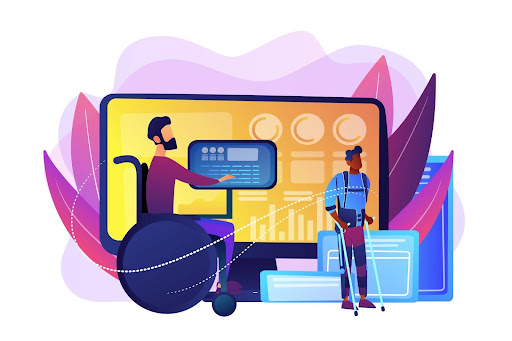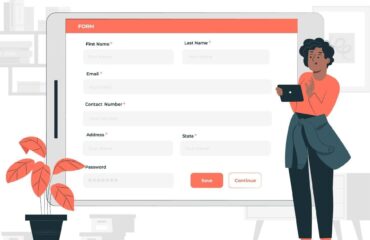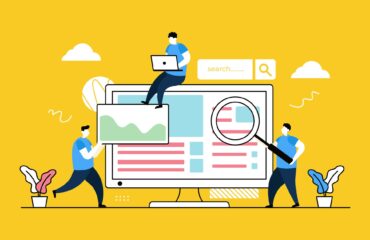
In today’s digital age, ensuring your website is accessible to everyone is not just a good practice, it’s essential. Accessibility means making your website usable by as many people as possible, including those with disabilities. It’s about inclusivity and providing equal access to information and functionality. In this blog, we’ll explore practical steps to make your website more accessible, why it matters, and how AlgoRythm Solutions can help you achieve your accessibility goals.
Why Accessibility Matters
Inclusivity
Accessibility ensures that people with disabilities can use your website. This includes people with visual, auditory, motor, and cognitive impairments. An inclusive website allows everyone to navigate, understand, and interact with your content.
Legal Compliance
In many regions, web accessibility is not just a recommendation, it’s a legal requirement. The Americans with Disabilities Act (ADA) in the United States and the Web Content Accessibility Guidelines (WCAG) internationally provide standards that websites must meet to avoid legal repercussions.
Better User Experience
An accessible website often translates to a better user experience for all users. Features like clear navigation, easy-to-read text, and responsive design benefit everyone, not just those with disabilities.
Improved SEO
Search engines favor accessible websites. Features that improve accessibility, such as alt text for images and proper heading structure, also enhance SEO, helping your website rank higher in search results.
Steps To Make Your Website More Accessible
1. Use Descriptive Alt Text For Images
Alt text describes the content of images. It helps visually impaired users understand the context of images through screen readers. When writing alt text, be concise yet descriptive. For example, instead of “image1.jpg,” use “A smiling woman holding a smartphone.”
2. Ensure Keyboard Accessibility
Some users rely on keyboards instead of a mouse to navigate websites. Ensure that all interactive elements, like links, buttons, and forms, are accessible via keyboard. Test your website by using the Tab key to navigate through elements.
3. Provide Transcripts And Captions For Multimedia
For audio and video content, provide transcripts and captions. This aids users with hearing impairments and those who prefer reading to listening. Platforms like YouTube offer automatic captioning, but reviewing and correcting captions is essential for accuracy.
4. Use High Contrast Colours
Ensure sufficient contrast between text and background colours to make your content readable for users with visual impairments, including colour blindness. Tools like the WebAIM Contrast Checker can help you determine if your colour choices meet accessibility standards.
5. Structure Content With Headings
Use proper heading tags (H1, H2, H3, etc.) to structure your content. This helps screen readers interpret and navigate your page. Headings should be used in a hierarchical order H1 for main titles, H2 for subtitles, and so on.
6. Make Links Descriptive
Links should make sense out of context. Instead of “click here,” use descriptive phrases like “read our accessibility guide.” This helps screen reader users understand the purpose of links.
7. Ensure Form Accessibility
Forms should be easily navigable and understandable. Use labels and instructions clearly and ensure that each form element is accessible via keyboard. Use ARIA (Accessible Rich Internet Applications) landmarks to enhance the user experience for assistive technologies.
8. Provide Text Resizing Options
Allow users to resize text without breaking the layout of your website. Use relative units like ems or percentages instead of fixed units like pixels. This ensures that text scales properly across different devices and screen sizes.
9. Implement ARIA Landmarks
ARIA landmarks help define regions of a webpage, making it easier for screen readers to navigate. Common landmarks include banners, navigation, main content, and footers. Implementing ARIA roles can significantly enhance the accessibility of your website.
10. Test Regularly With Accessibility Tools
Use tools like WAVE, Axe, and Lighthouse to regularly test your website for accessibility issues. These tools provide detailed reports and suggestions for improvements. Regular testing helps ensure that your website remains accessible as it evolves.

How AlgoRythm Solutions Can Help
Expert Consultation
At AlgoRythm Solutions, we specialize in making websites accessible. Our team of experts can evaluate your current website and provide actionable recommendations tailored to your specific needs. We understand the nuances of accessibility standards and can guide you through the process of making your website inclusive.
Comprehensive Audits
We conduct comprehensive accessibility audits to identify barriers that might prevent users with disabilities from accessing your content. Our audits cover everything from alt text and color contrast to keyboard navigation and ARIA landmarks. We provide a detailed report with prioritized recommendations.
Implementation Support
We don’t just point out issues; we help you fix them. Our implementation support services ensure that accessibility improvements are correctly applied to your website. We work closely with your development team or handle the updates ourselves, ensuring seamless integration of accessibility features.
Training And Workshops
We believe in empowering our clients with knowledge. AlgoRythm Solutions offers training and workshops to help your team understand and implement accessibility best practices. Whether you need a one-time workshop or ongoing training sessions, we’ve got you covered.
Ongoing Monitoring And Maintenance
Accessibility is an ongoing commitment. We offer ongoing monitoring and maintenance services to ensure your website remains accessible as standards evolve and new content is added. Our team stays up-to-date with the latest accessibility guidelines to keep your website compliant.
Customized Solutions
Every website is unique, and so are its accessibility needs. We provide customized solutions that address your specific challenges. Whether you need a complete redesign or minor adjustments, AlgoRythm Solutions tailors our services to meet your goals.
Conclusion
Making your website accessible is not just a legal requirement, it’s the right thing to do. It ensures that everyone, regardless of their abilities, can access and enjoy your content. By following the steps outlined in this blog and partnering with experts like AlgoRythm Solutions, you can create a more inclusive and user-friendly website.
Accessibility improves the overall user experience, enhances your SEO, and demonstrates your commitment to inclusivity. Start your accessibility journey today and make your website a place where everyone feels welcome. If you need help or have any questions, contact AlgoRythm Solutions. We’re here to support you every step of the way.


